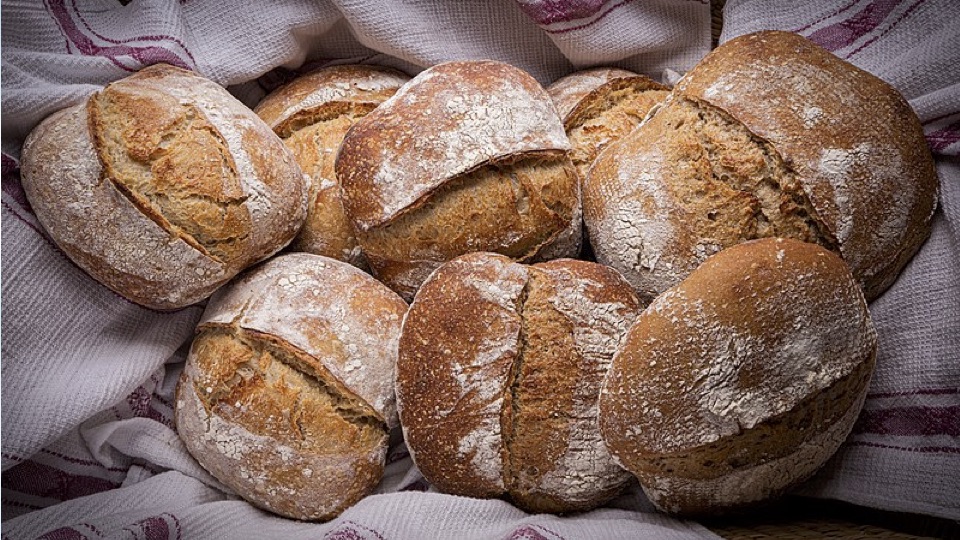Ahhh, bread. The staff of life. Armies marched both with it and for it. Because of it empires would rise and fall. Social status could be measured by the type of bread a person consumed. In western societies, political dynasties survived largely on their ability to provide this critical commodity to the masses. That’s quite a responsibility to place on what some people consider to be a simple store-bought pantry staple.
At times both mystifying and intimidating, the craft of artisanal bread baking has largely been the domain of a subculture of bread-heads who endlessly obsess over things like ash content and hydration levels. But the world has shifted. One of the unexpected by-products of the current pandemic is that people are rediscovering the soul-satisfying alchemy of bread baking. To the surprise of many, flour, water, salt and yeast can with a tiny bit of effort and minimal equipment be combined and quicker than you can say “Rumpelstiltskin” you can spin those basic ingredients into a golden loaf of bread at home.
Anyone who has ventured into a grocery store in the past few months has noticed that in spite of keto diets and legions of people with gluten sensitivity the cupboards are strangely bare of flour and yeast. The easy assumption would be that once the grocery store bread shelves are restocked people will go back to the easy habit of eating store-bought bread. But my guess is that ‘ain’t gonna happen. At least not for everyone. You see once you’ve gone down the rabbit hole of baking your own bread there’s no turning back. The feel of the dough, the magic of giving it life through fermentation, the connection of your own hands, to something that gives people so much pleasure, and that divine fragrance that fills your home with a tangible sense of love and commitment are transformative.
It is the endless cycle of transformation that is the essence of all baking. Sunlight, water, and nutrients in the soil bring a seed to life, transforming it into wheat. Grain is harvested which is the first cycle of life and death. The miller transforms the grain into flour. The baker transforms the flour into dough which is brought to life through fermentation, the conversion of sugars into starches. In the fires of the oven, the dough dies once again giving up its life when it is transformed into bread. That bread is now headed to its final transformation when it is consumed to provide nourishment and become part of a person’s body. Alive once again. Creation, Life, Transformation, Death, Rebirth, in a perpetual cycle controlled by its maker’s hand. Is there any wonder why bread has become such a powerful symbol of existence?
Now all of this can seem pretty metaphysical and a bit scary, but don’t worry. What was once the closely guarded secret of ancient guild members is now readily accessible, In fact, modern scientific observation has demystified the process so that virtually anyone can make a gorgeous artisanal loaf of bread at home with a bit of practice and no special equipment. Here’s the how AND the why:
Ingredients:
3 cups bread flour plus additional for dusting
1 ½ cups water at 80 degrees
2 teaspoons salt
½ teaspoon Instant yeast
Vegetable oil for moistening hands
Equipment:
Measuring cup
Measuring spoons
Large mixing bowl
4-5 qt Dutch Oven w/heavy lid
Large spoon
Plastic scraper
Parchment paper
Cooling rack
Oven mitts
That’s it! That’s all you need! No fancy mixer, No expensive oven No hard to find ingredients.
Now here’s the ultra top-secret complex techniques you must use to prepare the dough: Place the water in the bowl. Add yeast. Dump in the flour. Put the salt on top. Do not. I said, do not put the salt directly on top of the yeast. High concentrations of salt kill living things. That’s why the Dead Sea is dead. Too much salt.
Now grab that big spoon in your hand of choice. Stir the dough to combine the ingredients. Don’t overdo it. Just stir enough so you have a wet shaggy looking sticky blob, Cover the bowl with plastic wrap or a towel. Now comes the hard part. Do nothing. Leave it alone. Don’t touch it for 12 hours. Let biology do all of the work. While you are sleeping, walking the dog, or trying to figure out Tik Tok, the yeast is performing magic tricks. Sugars are being converted to starches, gluten networks are being formed, the yeast is burping out carbon dioxide and tasty amino acids are being created.
After a full 12 hours use the scraper to get that sticky mass onto a well-floured work surface. Clean that big bowl and dry it. You will be using it again. Now put some oil on your hands so the dough doesn’t stick to them. Working from the outer edge tuck the dough under forming a tight ball. Put parchment paper in the bowl with enough coming up the side so you can use the excess as handles. Sprinkle a small amount of flour on the paper. Place the dough in the bowl and cover the bowl with plastic wrap or a towel. Don’t let the cover touch the dough and make sure there is a gap so it won’t touch when it rises. Let the dough rise for 1 hour. While the dough is rising preheat your oven to 450 degrees with the Dutch Oven on the center wrack with the lid in place. When the shaped dough has risen for 1 hour, carefully slide the Dutch Oven forward using good oven mitts. Remove the lid. Quickly lift the dough into the Dutch Oven using the parchment as handles. Cover the Dutch Oven immediately and return it to the center rack of the oven for 30 minutes. After 30 minutes remove the lid and continue the bake for 15 additional minutes or until the loaf is deep brown. Don’t be afraid to let it bake. We aren’t making Wonder Bread. Remove the bread, discard the parchment, and place the bread on the cooling rack for at least one hour. If you listen closely you will hear the loaf singing to you as it cools. I’m dead serious. An artisan bread smells. Looks. Feels. Tastes and even sounds beautiful. There you have it. With a little patience and some simple ingredients, you have entered the world of craft bread baking.
-John Arena
Photo: Tomas Castelazo (Wikimedia Commons)



I don’t own a Dutch Oven. I currently am using a small air fryer & a convection oven. My real oven doesn’t work. Think I can make this bread in one of the above?
You could bake it in your convection oven.
A Dutch oven is another name for a casserole. If you have an ovenproof ceramic 4-6 quart casserole with a close fitting lid, it will work just as well.
Can I use a five dry yeast? And if so-how much?
Thank you
Oops active dry yeast
Sounds good I have a wood fired brick oven and bake bread fairly often but no two breads are the same and i like to try different ones
Totally wonderful.
Would it be a problem if the rising time was 14 hours rather than 12?…… asking for a friend.
I use almost the same recipe 18 to 24 hour is mine so more than 13 shouldn’t be a problem
Which is it? Stir it together, cover and leave it for 12 hours, as written above? Or for 18 hours, as stated in the video? Also, I was hoping to see in the video how he ‘tucks’ the edges under to form the tight ball.
The picture with the story showed whole wheat or rye rolls. This is the recipe I was looking for. The story gave an entirely different recipe. Very disappointed.
Why not use whole wheat flour instead?
I use regular all purpose flour and it comes out delicious. How would bread flour change this (just curious).